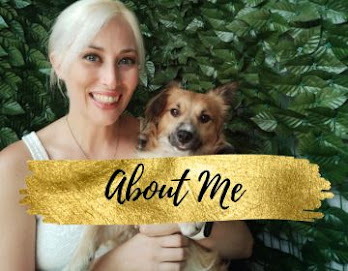A Guide to Image SEO: Boost Your Website’s Visibility with Smart Image Optimisation
A Guide to Image SEO
Boost Your Website’s Visibility with Smart Image Optimisation
If you’ve ever uploaded an image to your website and just clicked ‘save’, thinking that’s all you need to do, you're not alone. But here’s the thing – there’s a little more to it if you want those images to help you rank higher in search engines like Google. Enter Image SEO. You might have heard the term floating around, but what does it really mean? And why is it so important?
Let’s dive in and explore how you can optimise your images to boost your website’s SEO (Search Engine Optimisation), increase traffic, and make your content more engaging. It’s easier than you think!
Disclosure: The FTC Disclosure Provision is a law that requires influencers to disclose when they are being paid to promote a product or service. So please know that if I'm not making money through affiliate links/sponsored content on the post you're currently reading, it's an oversight on my part and will be corrected soon. Read the full disclosure about all the legal stuff here.
What is Image SEO?
Image SEO is all about making sure that the images on your website are properly set up so search engines can crawl, index, and understand them. Why should you care? Well, images can actually appear in Google’s search results, especially if they’re optimised. Plus, a well-optimised image can improve your page load time, user experience, and accessibility – all of which impact your SEO rankings.
1. Choose the Right Image Format
You don’t want to choose an image format just because it looks good at first glance. Different formats have different advantages. Here are the main ones to know:
- JPEG – Best for photographs or images with lots of colours. It’s a compressed format, so it helps keep your website’s loading speed fast.
- PNG – Ideal for images that need transparency, like logos or icons.
- WebP – This newer format offers great compression and quality. It’s fast but still supported by most browsers.
- SVG – Perfect for vector-based images, such as logos or illustrations. They can scale infinitely without losing quality.
Pick the one that works best for the type of image you’re using and balances between quality and file size.
2. Optimise Image Size and Resolution
One of the biggest culprits of slow websites is large image files. If your images are too big, they’ll slow down your website, and we all know how frustrating it is when a page takes forever to load. Slow pages also don’t do well in search rankings!
To avoid this, always aim to compress your images before uploading them. There are plenty of online tools out there that will help you reduce the file size without compromising too much on quality. Aim for the smallest possible size that still looks great.
Also, make sure your images are the right resolution. Don’t use super high-resolution images when a lower one will suffice. For web images, 72 DPI (dots per inch) is usually more than enough. High DPI images are more suited to print.
3. Give Your Images Descriptive File Names
This one’s super important – search engines can’t “see” images the way we do, but they can read the file name. So, giving your image a descriptive name makes it easier for Google to understand what the image is about.
Instead of uploading a file called IMG_1234.jpg, rename it to something like Woman-reading-a-book.jpg. This tells both users and search engines exactly what the image shows, making it more likely to appear in relevant image searches.
4. Use Alt Text (Alternative Text)
Alt text is a brief description of an image that appears when the image can’t load for any reason. It’s also incredibly important for accessibility – it helps screen readers describe images to people with visual impairments.
But alt text isn’t just for accessibility; it also helps with SEO. When you include relevant keywords in your alt text, Google can better understand what your image is about, which improves its chances of showing up in search results. Keep it clear, concise, and descriptive. For example, if your image shows a “sunset over the beach,” write: alt="sunset over the beach with waves crashing on the shore".
The following post offers some great information about Image Alt Text: What It Is, How to Write It, and Why It Matters to SEO.
5. Use Image Sitemaps or Schema Markup
A sitemap is a list of all the important pages and files on your website that you want search engines to index. You can also create an image sitemap, which specifically includes all your website’s images. This helps Google find and crawl your images more efficiently.
If you want to get a bit fancy, you can use schema markup – it’s a type of code that you add to your website to help search engines understand the context of your content better. This could make your images eligible for rich snippets, which are those extra little details that show up in search results (like star ratings or pricing).
6. Ensure Mobile-Friendly Images
Let’s face it – we all use our phones more than our desktops these days. Google also knows this, which is why mobile-friendliness is a key ranking factor. If your website’s images don’t look good or load properly on mobile, it’s time to fix that.
Ensure your images are responsive (i.e., they automatically adjust to fit different screen sizes).
7. Image Captions and Surrounding Text
Although it’s not a strict SEO requirement, adding captions and making sure your image is surrounded by relevant text can help boost SEO. Google looks at the context of your images (i.e., the text around them) to understand what the image is about.
If you have an image of a product or event, including captions and detailed descriptions around the image helps Google understand the topic and may increase the chances of your image ranking for related queries.
8. Don’t Forget About Image File Accessibility
This one’s not just for SEO – it’s about creating a more inclusive web. Make sure all your images are accessible to people with visual impairments. Use descriptive alt text, ensure high contrast for readability, and include text-based alternatives where necessary. This doesn’t just make your site more accessible; it shows Google you care about the user experience. Website accessibility is now also a legal requirement.
Final Thoughts
So there you have it – optimising your images for SEO doesn’t have to be complicated. By following these simple steps, you can make sure your images are helping (not hindering) your site’s performance. Remember, images are more than just decorative – they can boost your rankings, improve user experience, and help your site stand out in Google’s search results.
Next time you upload an image, don’t forget to optimise it for SEO. Trust me, those little tweaks can go a long way. Happy optimising!





.jpg)






.jpg)





0 comments